Gion is one of Kyoto’s most famous areas, known for its traditional wooden machiya houses, teahouses, and as the heart of geisha culture in the city. Gion is located in Higashiyama, to the east of the Kamo River.
Gion is one of the most beautiful and well-preserved districts in the whole of Kyoto. People from all over the world come specifically to see Gion, not just for its architecture, but in the hopes of spotting the elusive geishas.
Gion also hosts a variety of shrines and temples, including the Yasaka Shrine, known for its large wooden stage and hundreds of lanterns that light up at night.
This guide to Gion is your starting point to uncovering the secrets of this fascinating district. You won’t to miss Gion from your Kyoto itinerary.
Table of Contents
- Sightseeing in Gion
- Hanamikoji Dori
- Shirakawa
- Maruyama Park
- Temples and Shrines
- Yasaka Shrine
- Kennin-ji Temple
- Chion-in Temple
- Kiyomizu-dera Temple
- Authentic Activities
- Maiko or Geiko performance
- Teahouses
- Tea Ceremony
- Gion Festival
- Gion Corner
- Food and Drinks
- Shijo-Dori
- Kyoto-style kaiseki meal
- Hanasaki Manjiro
- Kiyamachi tousuiro
- Kikunoi Honten
- Traditional Lodging
Sightseeing in Gion
Gion is a beautiful district in Kyoto, and one of the most photographed areas in the city. Just walking around Gion will make you fall in love with Kyoto and its rich past. Gion has a history that dates back over a thousand years. This ancient district, has evolved from a pilgrimage rest stop near Yasaka Shrine in the Middle Ages into a famed geisha district, preserving its traditional architecture and customs through centuries.

Hanamikoji Dori
Hanamikoji Dori is the most popular and visited street in Gion. It stretches from Shijo-dori in the north to Kennin-ji Temple at its southern end.
Hanamikoji Dori is a fairly narrow lane lined with machiya houses and exclusive (read: expensive!) restaurants. Many of the shops here sell authentic silks and kimonos, and you’ll find fabric and leather stores too. The teahouses (ochaya) on Hanamikoji Dori are fancy places where people can eat kaiseki and watch performances by maiko and geiko.
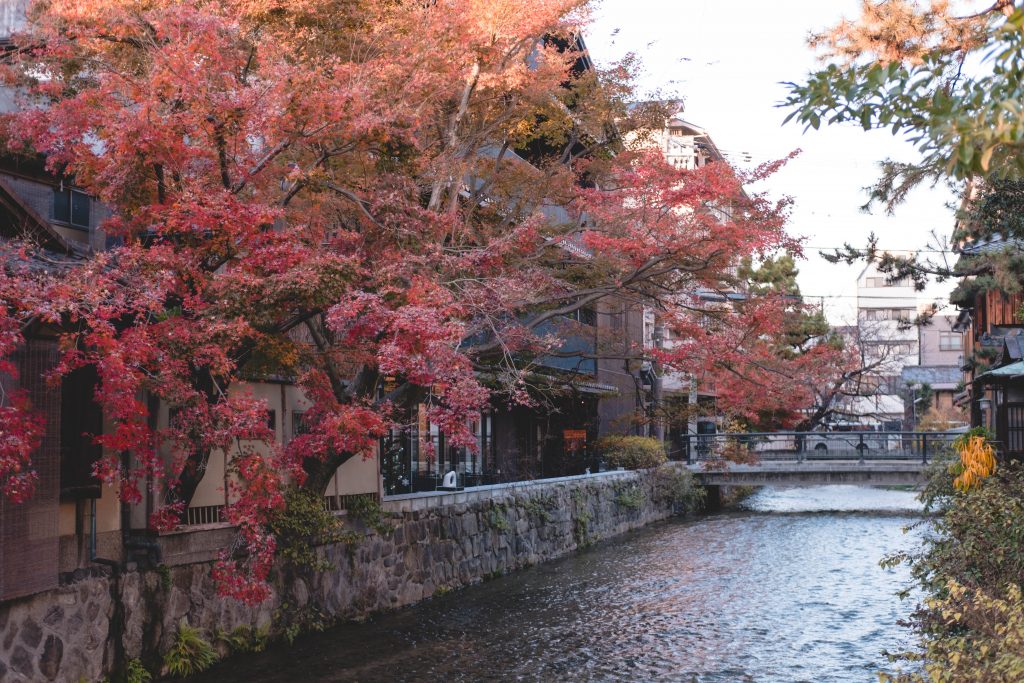
Shirakawa
Shirakawa is another popular area in Gion, primarily in the spring, due to its beautiful canal lined with cherry trees. Photograph the sakura with a backdrop of preserved machiya houses. This is a much more serene and scenic spot than the busier streets in Kyoto. Having said that, do note that during hanami, the canal area does get pretty busy as well and for that reason, it’s best to visit at first light in the morning for the best views.

Maruyama Park
Maruyama Park is Kyoto’s most famous park for cherry blossom viewing, located next to Yasaka Shrine. The park has been a popular gathering spot since its opening in 1886.
One of the most important features is an old and expansive weeping cherry tree (shidarezakura). This ancient tree is illuminated at night, drawing visitors from all over to witness its beauty.
This weeping cherry, is actually the second to grace this spot. The original tree, after flourishing for 200 years, succumbed in 1947. The current tree, cultivated from the seeds of its predecessor by Sano Tōemon XV—a cherry tree specialist in a long lineage of caretakers—was transplanted here over 90 years ago from its initial nurturing grounds. Today, it towers at 12 meters.
Temples and Shrines
There are plenty of beautiful temples and shrines to see in Gion, including the Yasaka Shrine, which hosts the Gion Festival. While the main streets of Gion have well-preserved wooden houses and fancy establishments, the temples and shrines in the area have some of the most stunning landscaped Japanese gardens.

Yasaka Shrine
Yasaka Shrine, also known as Gion Shrine, is a Shinto shrine located on the eastern end of Shijo-Dori. Yasaka Shrine dates back to 656 AD, originally established to protect the city from epidemics.
Yasaka Shrine is very recognizable with its stunning vermilion gate, and it hosts the annual Gion Matsuri, one of Japan’s most famous festivals, which takes place in July.
Yasaka Shrine houses a unique stage with hundreds of lanterns that are lit up at night, creating a mesmerizing view. This stage is used for traditional dance and music performances during festivals.
Kennin-ji Temple
Kennin-ji Temple is the oldest Zen Buddhist temple in Kyoto, founded in 1202 by the monk Eisai, who introduced Zen Buddhism and tea cultivation to Japan.
A unique aspect of Kennin-ji is its stunning fusuma (sliding door) paintings and the “Twin Dragons” ceiling painting in the Dharma Hall, commemorating the temple’s 800th anniversary. This artwork, created by Koizumi Junsaku in 2002, is a modern masterpiece in a historic setting, symbolizing protection for the temple.
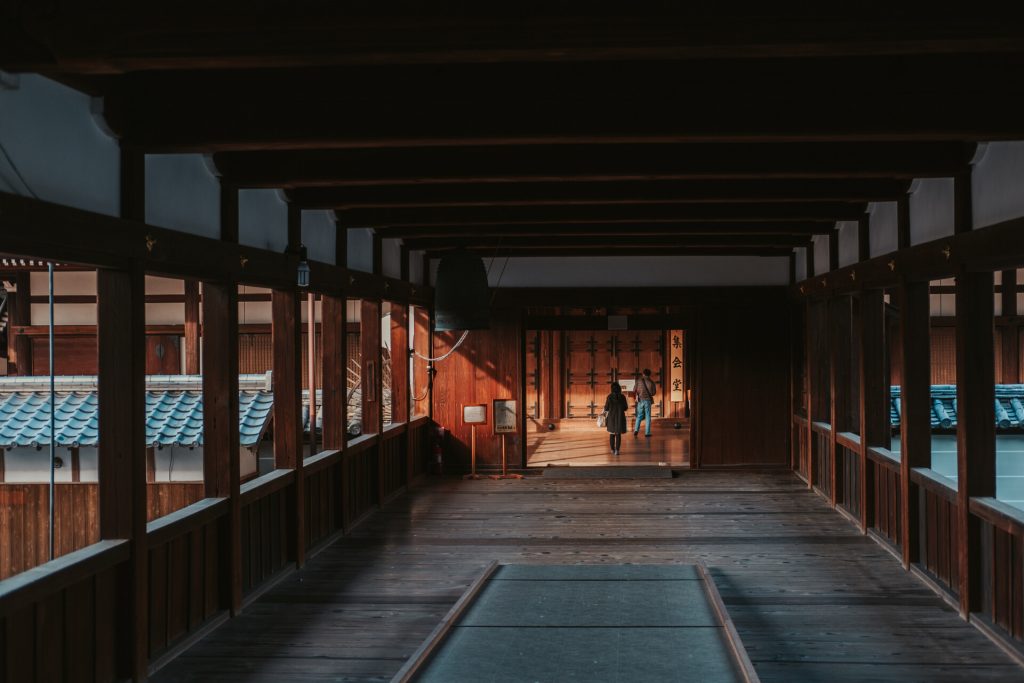
Chion-in Temple
Chion-in Temple is a significant Buddhist temple located behind the Maruyama Park. The temple serves as the headquarters of the Jodo (Pure Land) sect, and it’s mainly known for its massive Sanmon gate, which is among the largest in Japan. The temple’s origins trace back to the 13th century, established by Honen, who founded Pure Land Buddhism.
Chion-in has a hidden garden called Yuzen-en, often overlooked by tourists. It’s named after the famous Yuzen dyeing technique.
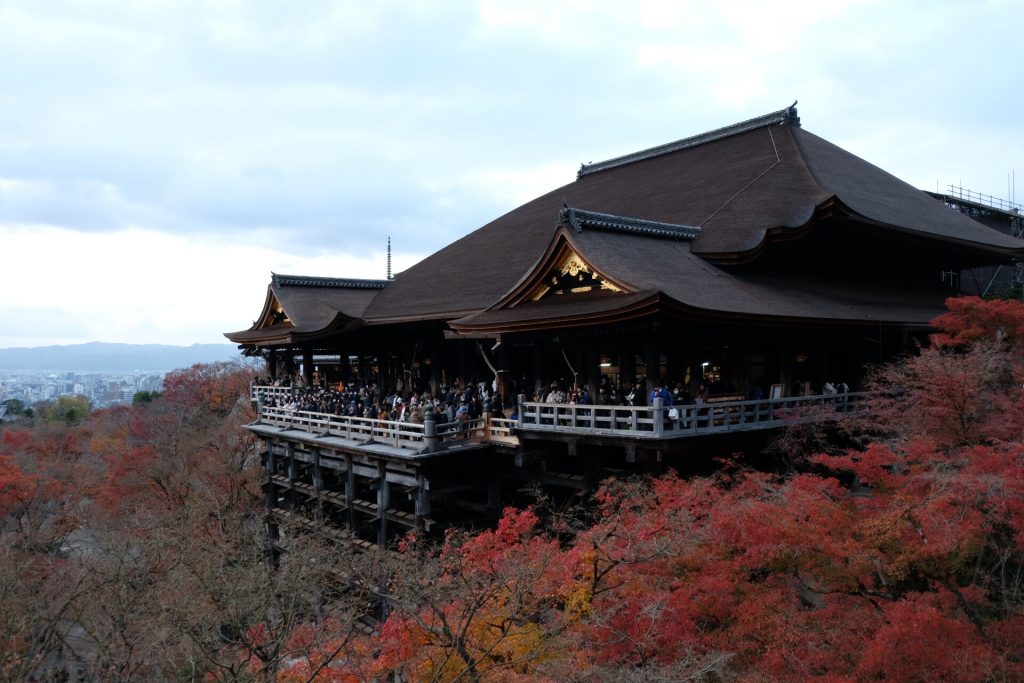
Kiyomizu-dera Temple
Kiyomizu-dera Temple is an iconic Buddhist temple in Kyoto, renowned for its wooden stage that offers breathtaking views of trees below. Kiyomizu-dera Temple is part of the Historic Monuments of Ancient Kyoto and a beloved UNESCO World Heritage Site. The temple dates back to 778, though the present buildings were constructed in 1633, without the use of nails.
Kiyomizu-dera has a small waterfall within its complex, divided into three streams. Drink from either of them, as each stream offers a different benefit: longevity, success at school, and a fortunate love life. However, it’s considered greedy to drink from all three, so pick yours carefully.
Authentic Activities
One of the most exciting experiences you can have in Gion is seeing a Maiko, an apprentice Geisha, perform with traditional music and dance. Gion is home to an array of teahouses which facilitate for such encounter. Certain high end kaiseki restaurants can also help book maiko and geisha encounters during private dining.

Maiko or Geiko performance
When you attend a Maiko or Geiko performance, you’re in for a treat of traditional Japanese entertainment. These performances are elegant and artistic, featuring dances that tell stories or represent seasonal themes, all accompanied by classical Japanese music played on traditional instruments like the shamisen (a three-stringed musical instrument).
The performers wear stunning kimonos and have intricate hairstyles. Their movements are precise and expressive, reflecting years of rigorous training.
If you’re lucky enough to attend a dinner with a Maiko or Geiko, you might play traditional Japanese games called ozashiki.

Teahouses
Japanese teahouses, known as ochaya, are exclusive venues where guests enjoy traditional entertainment, such as performances by geiko and maiko, along with high-end Japanese meals. Despite their name, teahouses are not a place for tea!
Entry is by invitation only, ensuring a private and loyal clientele. Ochaya are steeped in tradition, with many operating for over a century and traditionally being passed down through generations, often from mother to daughter.

Tea Ceremony
Partaking in a tea ceremony in Gion is a sought after cultural activity that teaches about the ritual of preparing and drinking matcha tea. The tea ceremony in Japan is called The Way of Tea, and the whole practice is about reflecting the principles of harmony, respect, purity, and tranquility.
The host, skilled in the art, prepares matcha (powdered green tea) using precise and graceful movements, serving it with traditional Japanese sweets to balance the tea’s bitterness.
Book your tea ceremony well in advance at Maikoya Tea House.
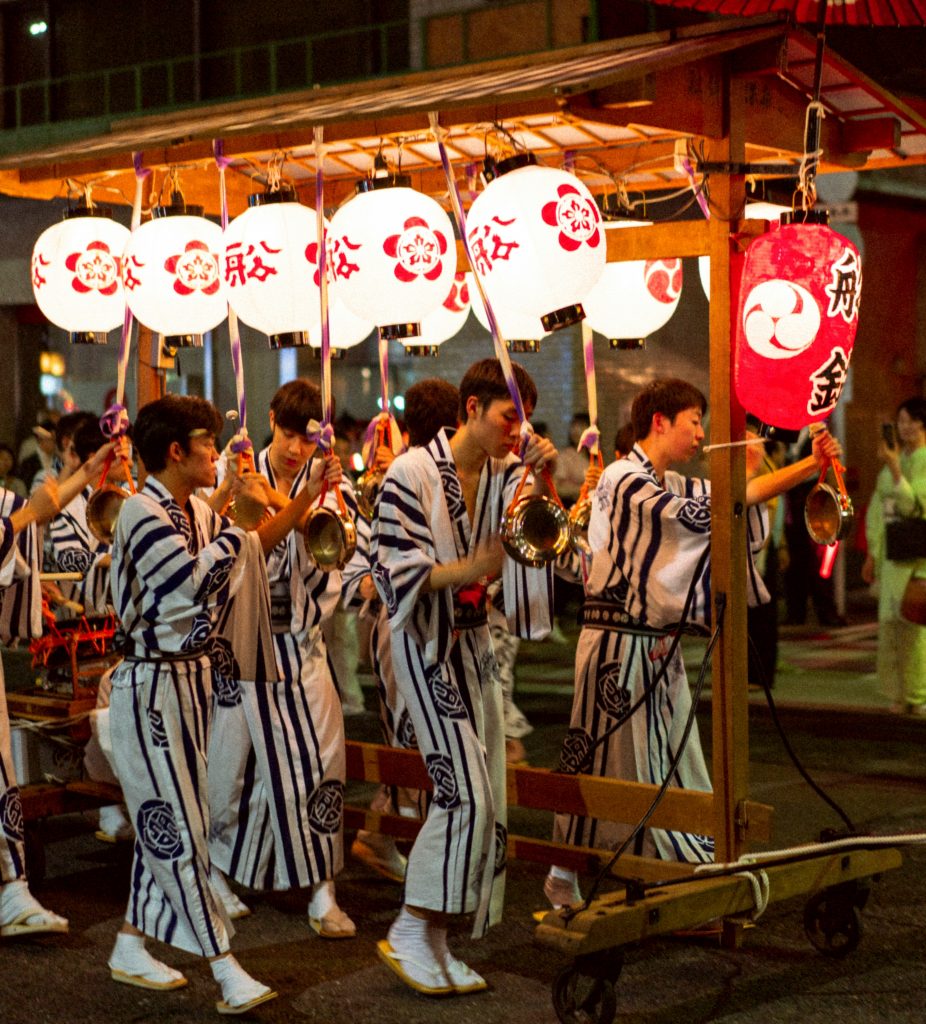
Gion Festival
The Gion Festival (Gion Matsuri) is one of Kyoto’s most famous and celebrated events, taking place every July. This festival, which dates back to 869, was originally intended to appease the gods during an epidemic. Today, it has evolved into a month-long celebration filled with events, traditional music, and parades.
The highlight of the festival is the spectacular procession of floats, known as Yamaboko Junko, held on July 17th and 24th. These floats are massive, some towering up to 25 meters high.
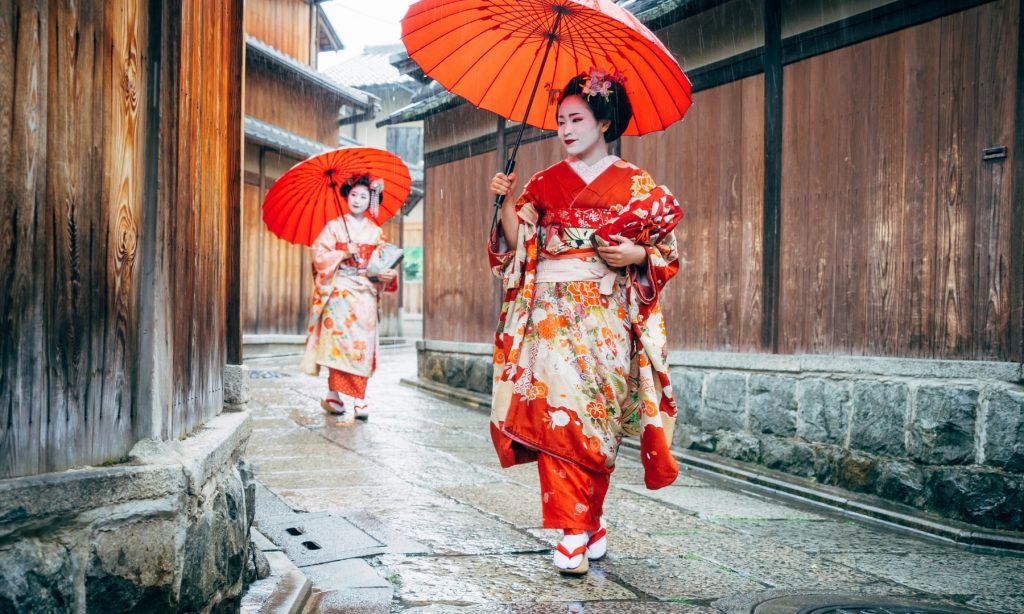
Gion Corner
Gion Corner is a small theater at the end of Hanamikoji which hosts maiko and geisha performances. Performances run every day starting at 6:00pm and at 7:00pm, and the duration of the show is around 50 minutes. The show includes chanoyu (the art of preparing tea), koto music, ikebana flower arrangement, bugaku dance, kyogen comedy, and Kyomai dance. Depending on the season, a scene from bunraku puppet theater or a noh play is performed.
Purchase your tickets from the official Kyoto Gion Corner website.
Food and Drinks
Kyoto is renowned for its culinary finesse, and what better place to sample all its delights but right in the heart of Gion? For snacks, street foods and souvenirs, Shijo-Dori is the place to explore. For high end Kaiseki meals, the narrow alleys of Gion have plenty of incredible restaurants with seasonal dishes that will appease every palette.

Shijo-Dori
Shijo-dori is a long street lined with shops and cafés selling local foods and drinks. It’s ideal if you are looking for smaller snacks to try like local biscuits, dangos and Yatsuhashi (a local Japanese sweet).
I put together a whole guide to Shijo Dori, one of the best places in Kyoto to find matcha treats and food souvenirs to take home with you.
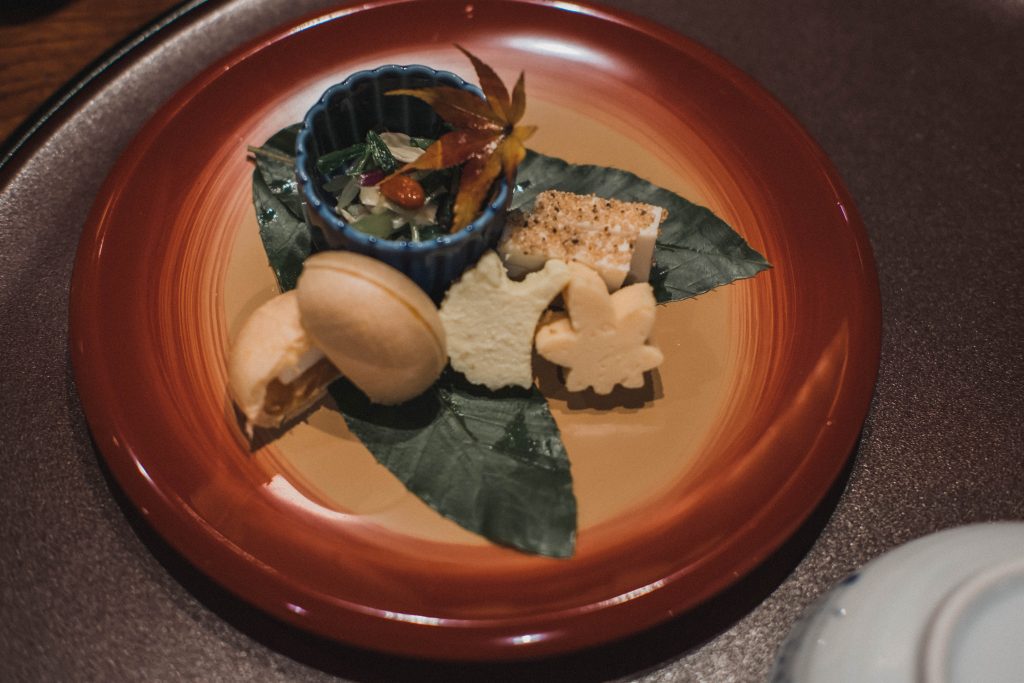
Kyoto-style kaiseki meal
Kaiseki is a traditional Japanese multi course meal which consists of several small dishes so you can try various textures and seasonal foods. Kyoto is the place to kaiseki and, to this day, is considered a high expression of Japanese culinary craftsmanship.
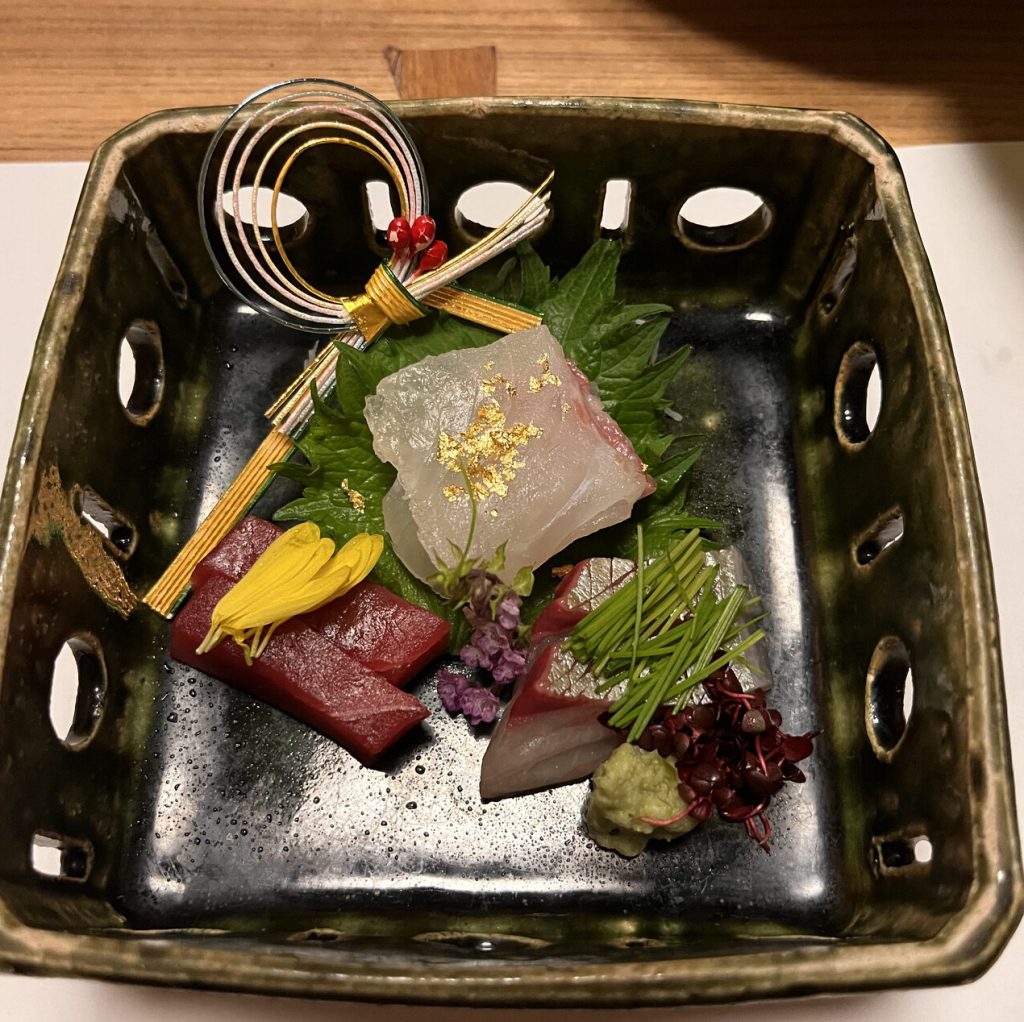
Hanasaki Manjiro
Hanasaki manjiro was by far our favorite kaiseki restaurant in Kyoto. We continue to recommend it to everyone we help organize tours for. The dishes at Hanasaki manjiro look stunning, arranged to perfection. They are delicious, with many colors and textures and the nakai (the lady who serves the meal) was very polite, attentive and wearing the most beautiful kimono. Book a table via the official Hanasaki Manjiro website.
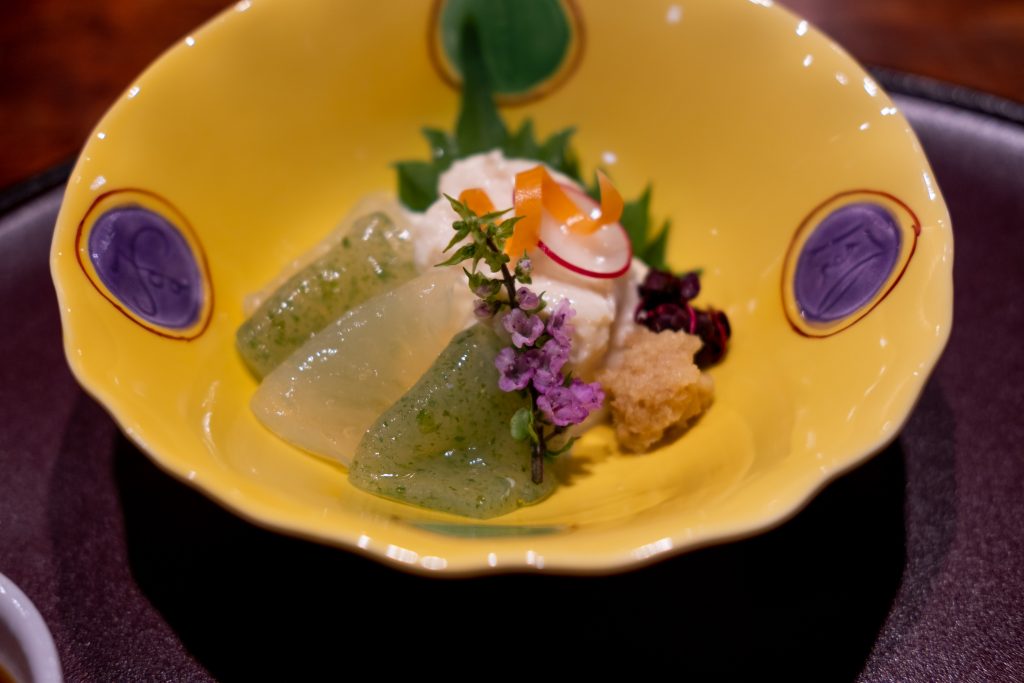
Kiyamachi tousuiro
Multi-course tofu meals served in a traditional Japanese house. Counter seats as well as low tables on tatami. The meal is so beautifully presented, and one of the highlights is the yudofu served in a hinoki container. Book a table via the official Kiyamachi tousuiro website.

Kikunoi Honten
A high-end Michelin starred establishment with private tatami rooms. Many reserve this restaurant for months in advance. We also had the pleasure of dining here. We have a full review of Kikunoi Honten.
Traditional Lodging
Gion offers plenty of traditional lodging, be them in converted matchiyas, now guest houses or authentic ryokans with tatami floors. Many ryokans in Gion offer dinner and breakfast included in the stay, making it a superb experience. Make sure to check where to stay in Kyoto and book your accommodation well in advance. Ryokans usually book for months ahead of time, especially during the cherry blossom season.
Yuzuya Ryokan is a luxurious 5-star hotel located in the famous Gion of Kyoto, steps from the Yasaka Shrine. It features Japanese-style accommodation with traditional multi-course meals. All rooms include tatami floors and traditional futon bedding. Guests can relax to the scent of Japanese citron as they soak in the warm public baths.
Kyokoyado Yutone features rooms with a private Cypress-wood bath, amenities from Mikimoto, free Wi-Fi and touches of Japanese design. The set-menu Japanese breakfast is served at the dining room. Kyoto-style kaiseki multi-course dinner can be sampled upon prior request.
Ryokan Motonago is an authentic Japanese inn recommended by the Michelin Guide. Boasting Japanese-style accommodation with traditional Kyoto dining options, it offers a public bath and has free Wi-Fi in public areas. The public bath can be reserved for private use.

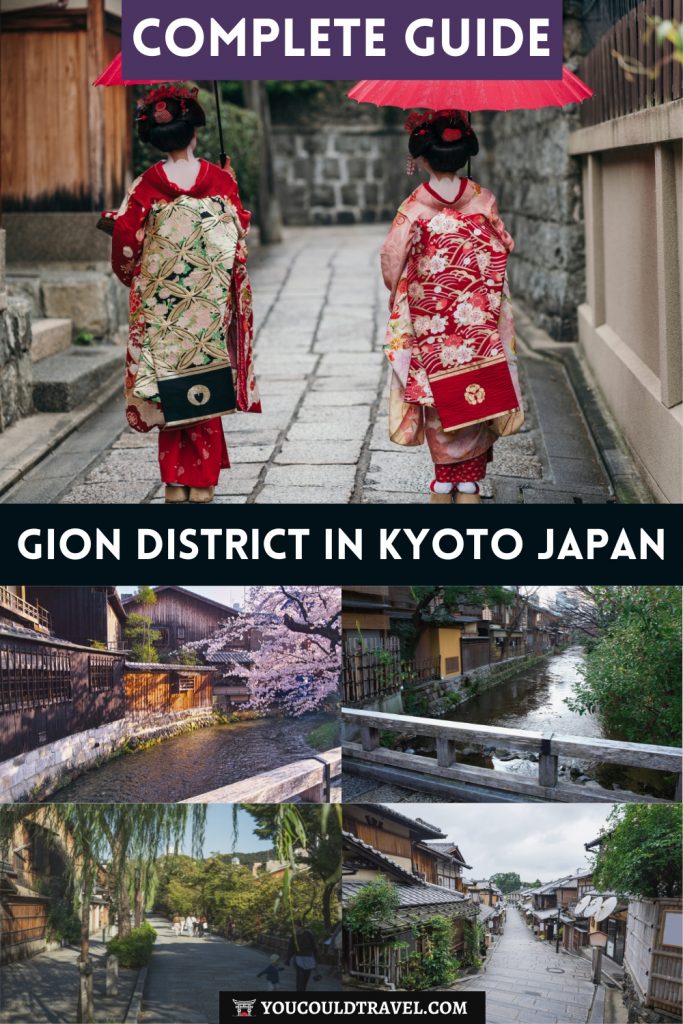

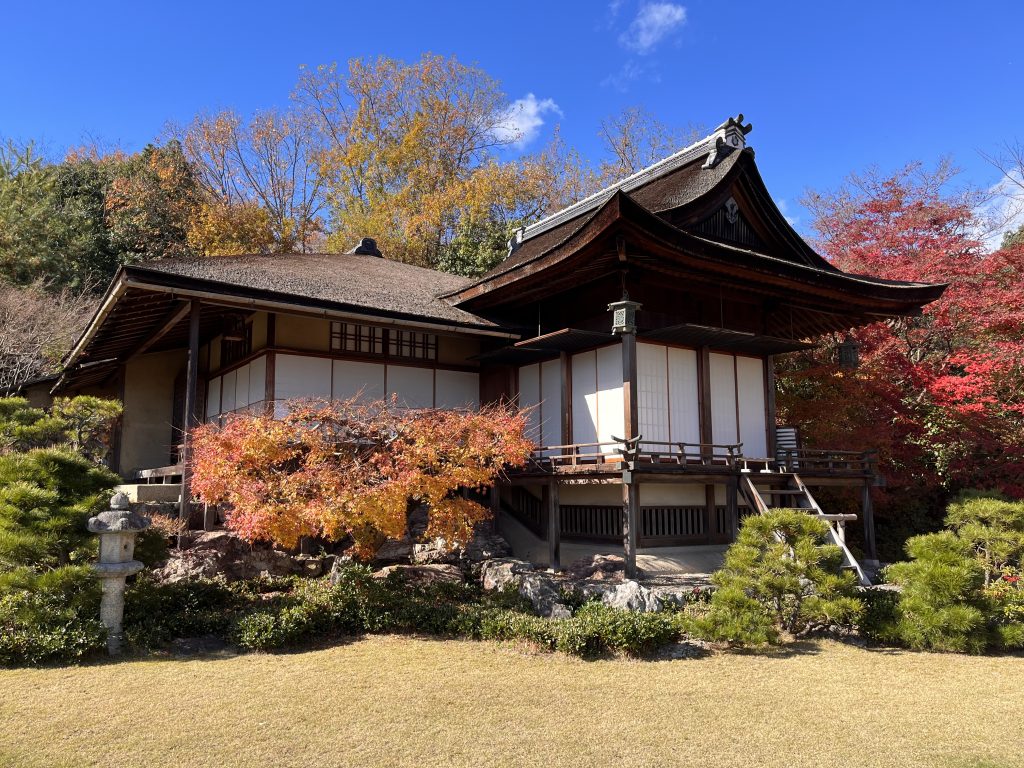

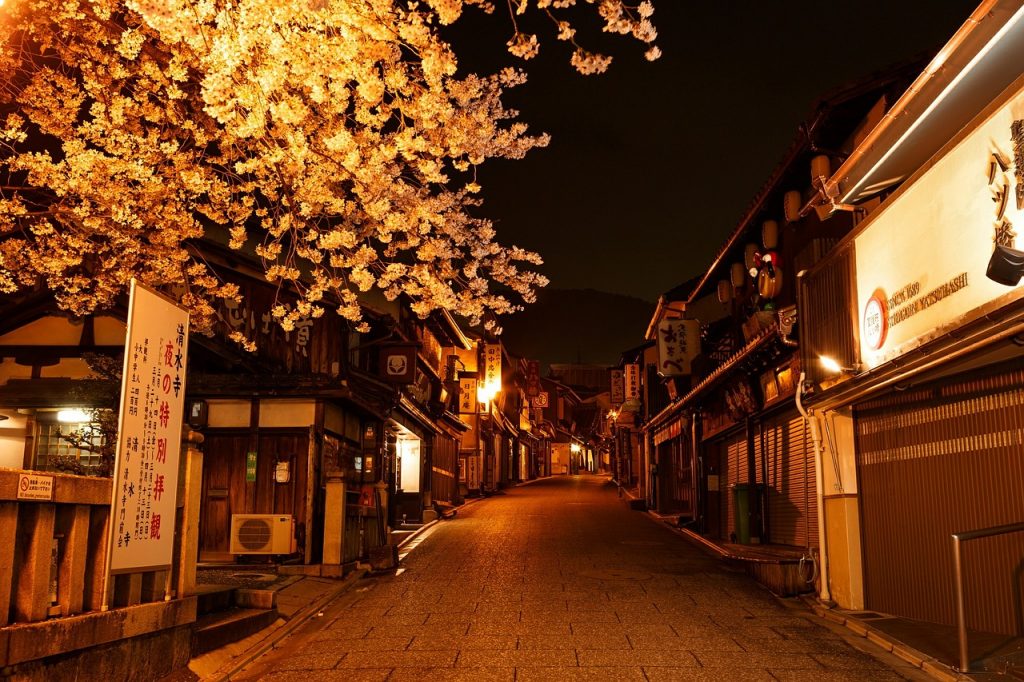
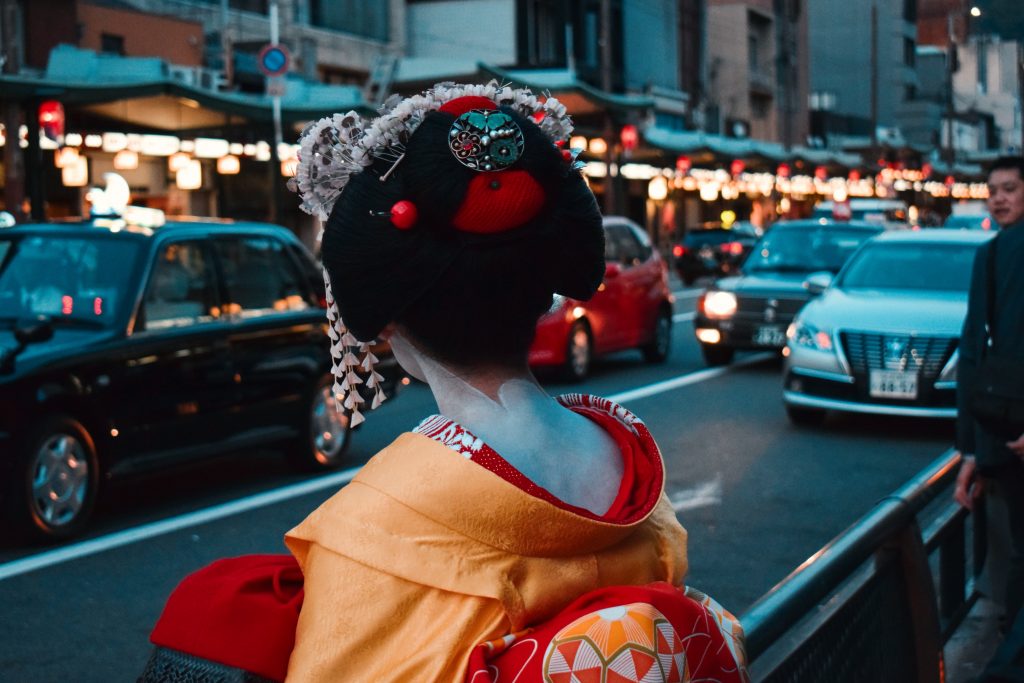



Leave a Reply